Chapter 3 - Getting "high tech" to Grass Valley
Charlie Litton
Litton middle aged
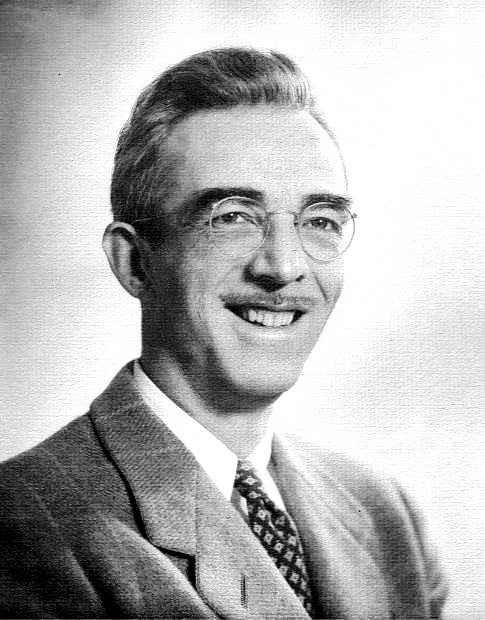
Litton was born in San Francisco in 1904, and grew up in Redwood City, a little ways down the San Francisco Peninsula. He took an interest in radio transmission growing up. The bay area was a hotbed of early ham operators. Litton went to the California School of Mechanical Arts in San Francisco after high school, and then went on to get a mechanical engineering degree from Stanford at the age of 20. A year later he tacked on an electrical engineering degree. He would be known for his mechanical prowess for the rest of his life. It was during his final year at Stanford that he first became interested in vacuum tube design and fabrication. He went on to receive a master's degree. His thesis was about demountable vacuum design. That is a fancy way of saying that the whole vacuum tube does not need to be scrapped when it fails, that only the bad part of it needs to be. What usually fails in tubes are filaments and the cathode.
Following his studies, he worked as a research engineer for Bell Telephone Laboratories in New York for two years, and in 1927 came back to California to work for the Federal Telegraph Company, and eventually headed tube engineering for the company. Litton experimented with new techniques and materials for building vacuum tubes, and he built the first practical glassblowing lathe. Cecil Howard Green, who would go on as a founder of Texas Instruments, worked for Litton during that time. During the depression, Federal was acquired and moved its facilities to New Jersey. Litton stayed in California.
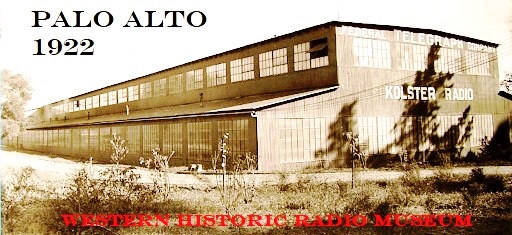
Federal Telegraph Company building
The Federal Telegraph Company, started in the bay area in 1909, played a large role in the early development of radio, employing the likes of Lee De Forest early on, the inventor of the vacuum tube. Federal eventually became part of IT&T, which prompted the moved to New Jersey. So, Litton continued his experiments in the shops on his parents Redwood City property, and he founded Litton Engineering Laboratories with his own savings in Redwood City. The company provided a vehicle that enabled him to continue his research, development, and manufacture of equipment to serve the vacuum tube manufacturing industry. This company, as his other businesses would be, were administered so that his own personal philosophy, policies of operation and ideas were those of the company. Charlie Litton, Jr, one of Litton's two sons, said "My father always said there were three ways to do things, the right way, the wrong way, and the Litton way. He always found a better way to do things in an innovative way."

Litton's tubes
Leaving the bay area
So, we are now close to what transformed the area into a high-tech area. This part of the story is a one-two punch, or kick start, by two men who came to town in rapid succession. Both were California natives. They both loved the Sierra. The first was Charles Vincent Litton, Sr.
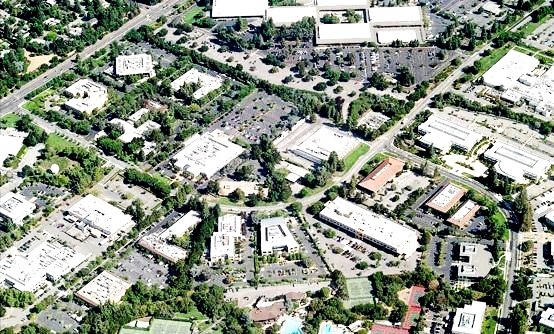
Stanford Research Park
Early on Litton's company concentrated on vacuum tube manufacturing equipment. In 1936, at Fred Terman's request, Litton helped nearby Stanford create a tube research lab. On a recommendation from Terman, Litton funded an assistantship for Dave Packard, of HP fame, to be an assistant at the lab. Terman is widely credited with being one of the founders of Silicon Valley. In 1951 he convinced Stanford to lease land it owned to create what is known today as Stanford Research Park. Companies such as Varian Associates, HP, GE, Xerox, are a few of the 150 companies, in 140 buildings that now reside there and employ 23,000. Terman always encouraged his students to go off and start their own businesses. This philosophy and the business park helped launch Silicon Valley, that started in Palo Alto, and generally spread south to San Jose, north into San Mateo towards San Francisco, and around the south bay to Fremont and Hayward. Litton's company, just a little north of Stanford was part of that genesis.
Litton's glass working machinery and equipment, especially the lathe, for the manufacture of power vacuum tubes, became renowned throughout the industry. In 1940 they expanded and began to manufacture vacuum tubes to meet wartime demands. During WWII, Litton helped Raytheon develop the magnetron, a microwave-generating electron tube that greatly enhanced the range of radar at a time when the U.S. very much needed a defensive edge. In 1942, while still supervising his own business, Litton went East for two years to help the Federal Telephone Company in New Jersey with the manufacture of a high frequency radar tubes also. The expertise developed during the war helped Litton Industries become a force in the defense industry.
A fire in November 1945, destroyed Litton Engineering Laboratories manufacturing plant and development laboratories. This precipitated the separation of the vacuum tube phase of the business and its subsequent move to San Carlos, California, which became Litton Industries. The military liked Litton's vacuum tube products and so this part of the company sold them only to the Department of Defense. Litton Engineering Laboratories continued to manufacture glass working machinery and equipment.
In 1953, he sold the stock of Litton Industries to Electro-Dynamics for $1.5 million and it became Litton Industries, Inc. He wanted to be freer to do research and development, and so this allowed him to scale down the size of the business he was running. During the 60s Litton Industries grew into a conglomerate, and got into calculators, electronic parts, aircraft guidance systems, publishing, medical products, office furniture, even shipbuilding. In the 80s it spun a number of those industries off to concentrate more on its defense business. In the 90s it again started buying others. In 2001 it was bought itself and is now a part of Northrop Grumman. All during this time Litton kept Litton Engineering Labs, a smaller glass-working machinery and manufacturing company, that still serves clients today. But it is no longer in the bay area.
Litton purchased extremely remote property at a place called English Mountain
For a while the family lived there, with Litton commuting down to Grass Valley
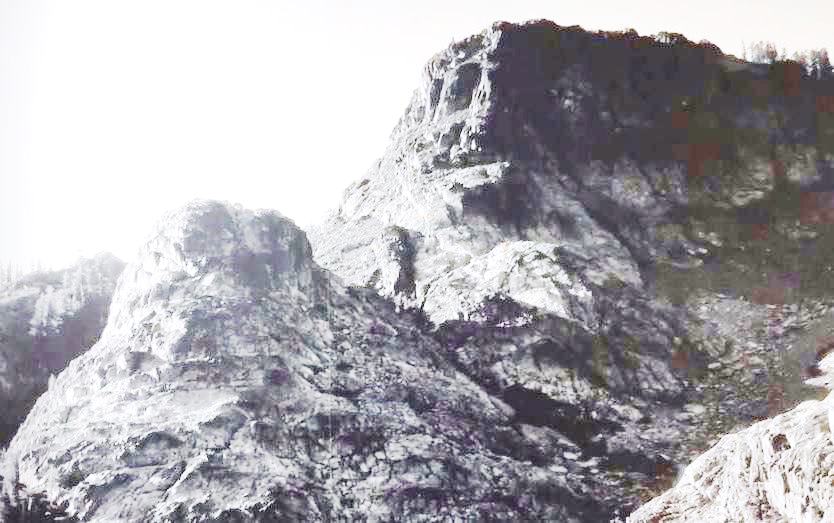
The seeds for Litton restructuring his company started in 1949 when he took a trip to Jackson Lake, which is deep in the Sierra, and enjoyed it so much, he bought one of the few houses there. Paul Burns was a lifelong friend of Litton who had went to school with him. Burns had a place in Graniteville, a small settlement in the depth of the Sierras. He knew of property at Jackson Lake by nearby English mountain. Litton wanted solitude and that place had it. It was, and still is, 10 air miles to the closest highway and any civilization. Many of the roads in the area are glorified jeep trails. Charles Litton Jr. recalls his father's fondness for nature, something he shared with the rest of his family. "He wanted to move the company to the closest civilization to that spot," Charles Litton Jr. said. "He always loved the mountains, and it's a place our family still visits to this day." He commuted from the bay area up to the lake until 1953.
He started thinking about how he could work closer to the lake. He made this possible by selling off the larger part of the operation and keeping the smaller glass lathe operation. The part that he sold was fairly mature, as tubes were starting to be replaced by the transistor and other devices. But even to this day, there are specialized tubes still in daily use, usually in situations where high power is required, such as satellite, broadcast, and microwave transmission.
The part that Litton kept, the glass making lathes, would continue to be in demand for other glass making endeavors, it would not be a business that would consume all of Litton's time, and allow him to go back to research. He knew that he had to find a place where he could set up a modest manufacturing site. The three closest towns of any size were Truckee, southeast of his homestead, Reno to the east, and Grass Valley/Nevada City to the west. Although Truckee was the closest to the site, it was still rather isolated at the time. Also, its winters can be brutal. See the Donner Party, as Truckee is adjacent to Donner Lake. Reno was not seriously considered, so that left Grass Valley/Nevada City. Here the winters were much more temperate as the two towns sat at 2400 feet, not the 5800 feet that Truckee sits at, or even the 4500 elevation of Reno.
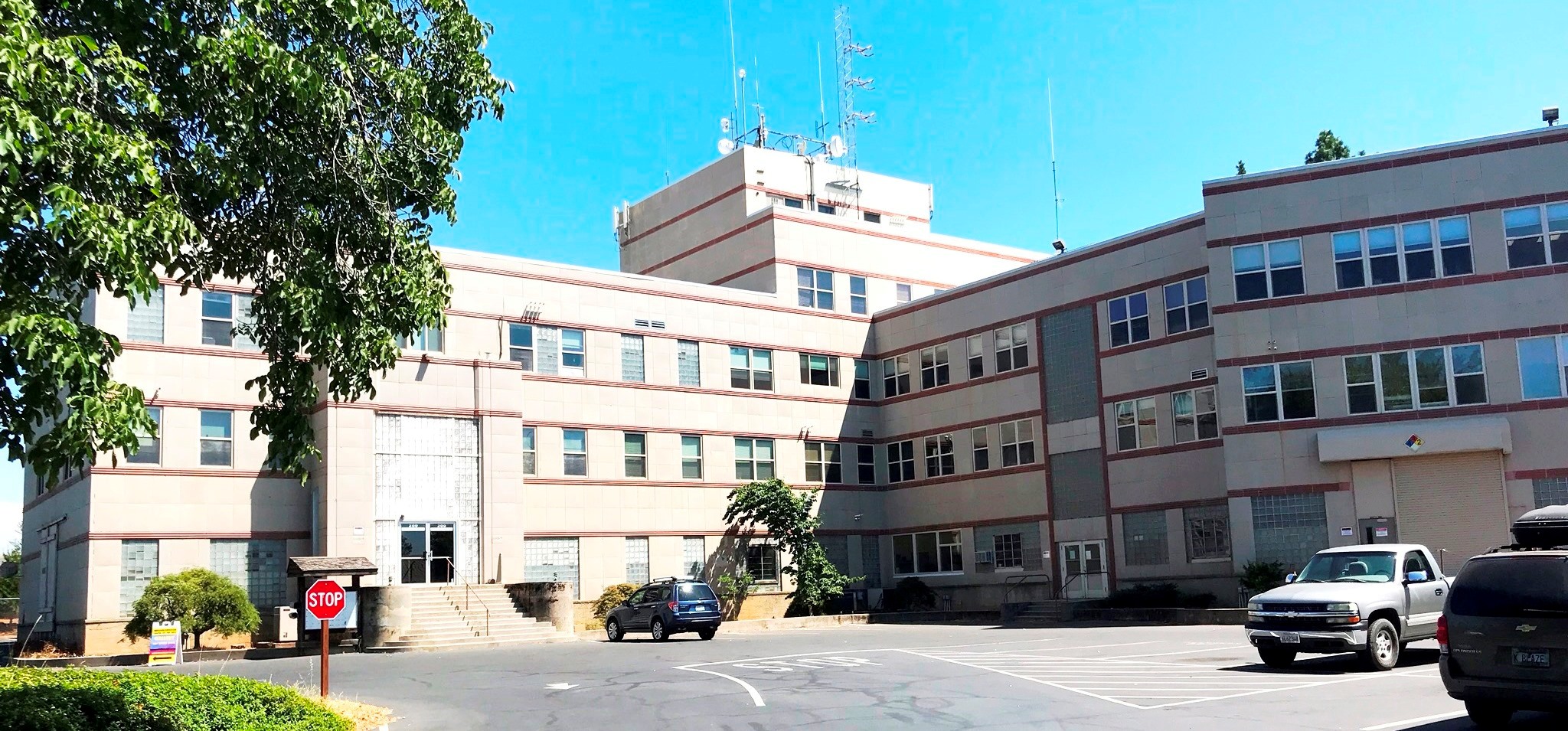
The Litton Building today
Grass Valley had one other attribute, besides seeing much less snow in the winter, it had a large vacant multistory building on Shaw Hill north of Grass Valley that, although not finished and ready for inhabitants, could be had for a song. MacBoyle's would be hospital, could no longer be one because hospital specifications had changed, rendering the partially built structure obsolete. The facility was purchased by Charles Litton in 1954 and finished out into an incredibly unique facility. In 1958 $200,000 from the sale of the would be hospital helped fund construction of the current Sierra Nevada Memorial Hospital, a couple blocks to the south.
Litton founded English Mountain Ranch, Inc., to handle ownership of the new building and real estate and moved Litton Engineering Laboratories into his renovated and completed, what was almost a hospital facility in Grass Valley. The building sits on what is now aptly named Litton Drive, a block from the Grass Valley campus of the local junior college. The newly arrived business kept mainly to the production of machinery and equipment for the glass lathe industry.
The commute from Jackson Lake to Grass Valley would have taken almost two hours each way by road, in good weather, so Litton got his helicopter pilots' license. For many years aeronautical maps showed heliports up at their house and near the Litton building, which now houses a baseball diamond.
Litton Engineering
Litton sold off most of his business to head towards the Sierra
He kept Litton's Glass Lathe machinery business
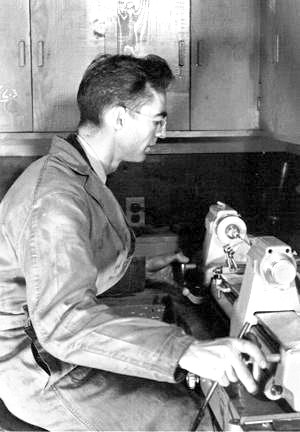
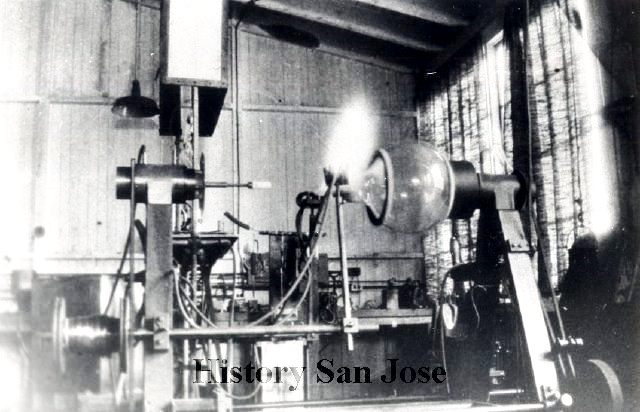
Lathe creating glass envelope for a large tube
Litton operating one of his lathes
Requests for Litton's help did not stop rolling in. He had an important role with Fairchild and their development of ICs. Fairchild could not get seals for the ceramic that encased the internal circuitry to work. Since Litton had pioneered the sealing of metal and glass for vacuum tubes and so he was quite valuable when it came to the material science of newer technologies. He took on a contract for Fairchild. Where the packaging engineers seemed to be getting it wrong the most was in the cleanliness of the process. In this way Litton helped make the planar process possible.
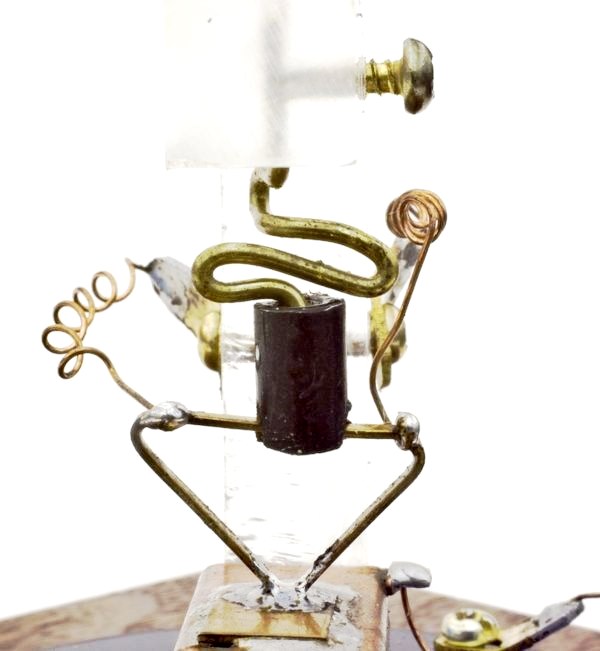
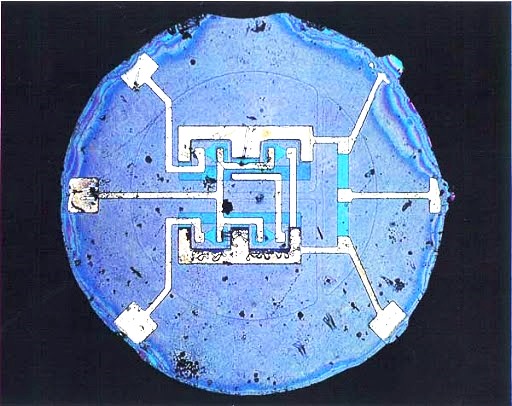
(Left) How transistors originally were crafted.
The Planar Process.
Litton had the reputation that when anyone had a process problem, they came to see him. Soon Robert Noyce, who would go on to be a founder of Intel, was etching complex circuits, not lots of identical parts, onto silicon. In 1961 Fairchild shipped its first IC. Over his lifetime Litton held 65 patents on various high-tech innovations. At one point the defense departments requested that Litton go back into the production of magnetrons, as he seemed to be able to build ones that could be installed into satellites and survive the pummeling that a rocket launch delivers.
The Children
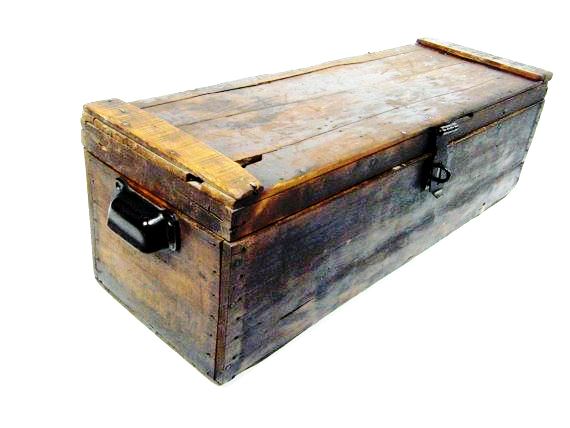
Charlie Sr has two sons and a daughter. The two sons literally grew up in the family's business. Larry, the younger of the two brothers recalled that on his 10th birthday their father said he had a surprise for him. Larry had all kinds of expectations. He was given a box. Turns out the box was just a platform for him to stand on. Senior said now you can learn how to use a drill press and other machine tools. The brothers after school activities were learning to do carpentry from their father's employees. They also got foundry lessons. An employee, Gordon Crane, was kind of in charge of their industrial education.
When they were 14 and 15 their father wanted to know if they were going to take over the business. Not knowing any better they said "sure."
Their father hated that at the time graduates from Nevada Union high school with good grades would still flunk out at Stanford and other colleges. So, he decided that Charlie Junior and Larry would be sent off to the Menlo School in Atherton, on the San Francisco Peninsula. Menlo, as it is simply referred to is a college preparatory. Charlie Junior had just completed the ninth grade and Larry the eighth at local schools. They both failed the entrance exam. Larry thinks they did that on purpose as they did not want to go. So, for them to go they would both have to go through the ninth and eighth grades again respectively. While they had boarding for ninth graders, eighth graders they did not. Charlie Junior went four years to Menlo, and for some reason Larry never went, and ended up going to Nevada Union. Charlie Junior said he was glad he went.
Menlo was a prep school for Stanford, but Charlie Jr did not have all the extracurricular activities Stanford wanted. So, Stanford said go anywhere else and get the basics and they would let Charlie Junior in as a sophomore. Instead he went to the University of Colorado and majored in electrical engineering. Colorado was a better climate for his bronchitis, so he never attended Stanford. Although Charlie Junior said he did not want to come back to Grass Valley he ended up doing so in 1970. Larry came back in 1974.
In 1968 the parents moved to Nevada as they were fed up with California and had bought property from Bill Itel in Dayton Nevada on the Carson River about 35 miles southeast of Reno. Bill was a founder of ITEL, which was founded in 67 to lease IBM mainframes. Ten years later they partnered with National Semiconductor and Hitachi to sell IBM compatible mainframes. Eventually National took over ITEL.
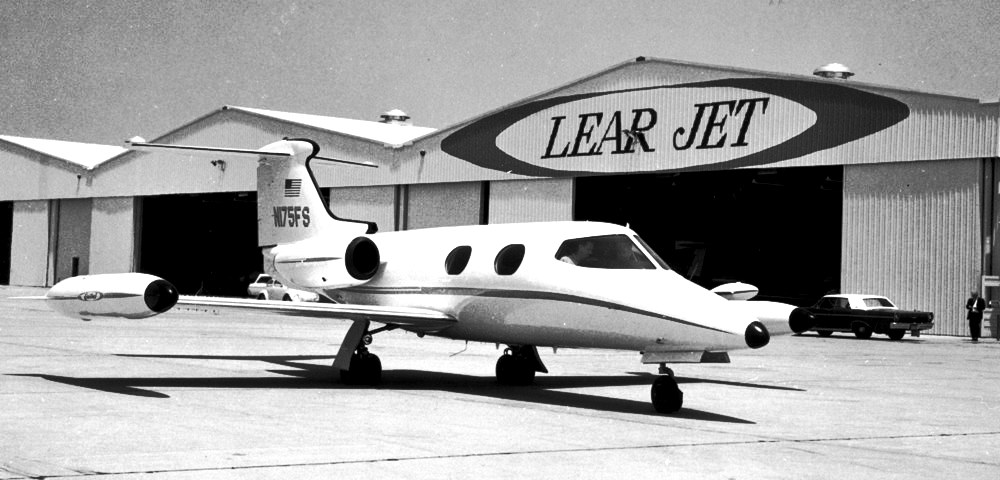
Senior first moved manufacturing and inventory to what was then Stead Air Force Base and rented space from Bill Lear of Learjet fame. Parts were still made in Grass Valley and then assembled in Nevada. Manufacturing left Stead and moved to the land Litton bought in Dayton. He had a building erected and moved operations into it.
But Litton Sr had an aneurysm in 1968 that was repaired, but he never did give up smoking. In 1972 he had a coughing fit and re-ruptured the aneurysm. The fix applied in 1968 was a Teflon mesh, much like Chinese handcuffs. It broke. He ended up in the hospital, needing blood transfusions and he went into a coma.
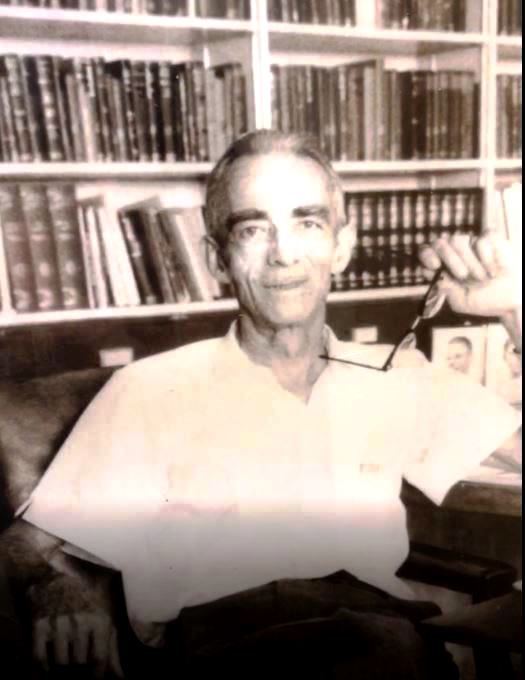
Late in life
When the rupture happened Charlie Jr left from Grass Valley during a horrible snowstorm, and it took a long time for him to get to Nevada. Larry left at the same time from San Luis Obispo and got to Paso's Robles, where he got stopped for speeding. He told the cops what his situation was, and they then gave him an escort to Davis. There was a new escort to Auburn where traffic was stopped because 80 was now closed due to the snow. The state plowed 80 just for him. He got to Nevada and Nevada troopers got him the rest of the way. Larry thinks they did all this to save a life, that of a well-known and respected engineer and entrepreneur. Larry had his father's blood type which was o negative. While that type can be used in place of other blood type, a o type recipient can only take type o. After the heroic efforts, he got there too late, and Senior died November 14, 1972.
Larry spent four years in the service and then went to Cal Poly and majored in machine design and minored in electrical engineering. He also studied mechanical engineering and metallurgy. But he never did graduate, having a few units left.

The sons carried on the business but moved all the company's operations back to Grass Valley. After senior passed the family had a meeting and no one wanted to move to Nevada. So, they sold the Dayton property. Charles Jr and Larry carried on in their father's entrepreneurial spirit.
Larry set up one of the first ISPs in the area before DSL or ISDN so he could have high-speed connectivity. He sold the service to others. Larry was not looking to make money, just wanted good connectivity. Internet connectivity is still an issue in many parts of the Grass Valley and Nevada City area. Larry also got involved in producing oscilloscopes with a partner.
Litton Sr was a central player in the electronics industry. Not only in the bay area, but as we have seen, it continued up in Grass Valley. David Packard once said that Litton was the best engineer he knew. When the Litton's lived in the bay area a neighbor was Alexander M. Pontiatoff. He founded Ampex, the name is an acronym for his initials with the EX standing for Excellence. His company invented the VTR. For many years Ampex competed with Grass Valley Group in a few areas. Litton's sons occasionally visited Pontiatoff in honor of their father. But as we will see, under it is a small world, the Litton sons would eventually host alumni of Ampex, which led to early advances in the video game market.
Litton Sr. pioneered communications between Grass Valley and Jackson Lake. He implemented the first high frequency radio link between Grass Valley and a mountain top near his house and ran phone lines down to the house. He had periodic trouble with tree sap shorting out the line. Litton for a while was on the Nevada County Planning Commission. This appears to be partially because after AT&T finally installed service to his remote homestead, he wanted AT&T to give him signal to noise parameters for his phone line.
Community involvement
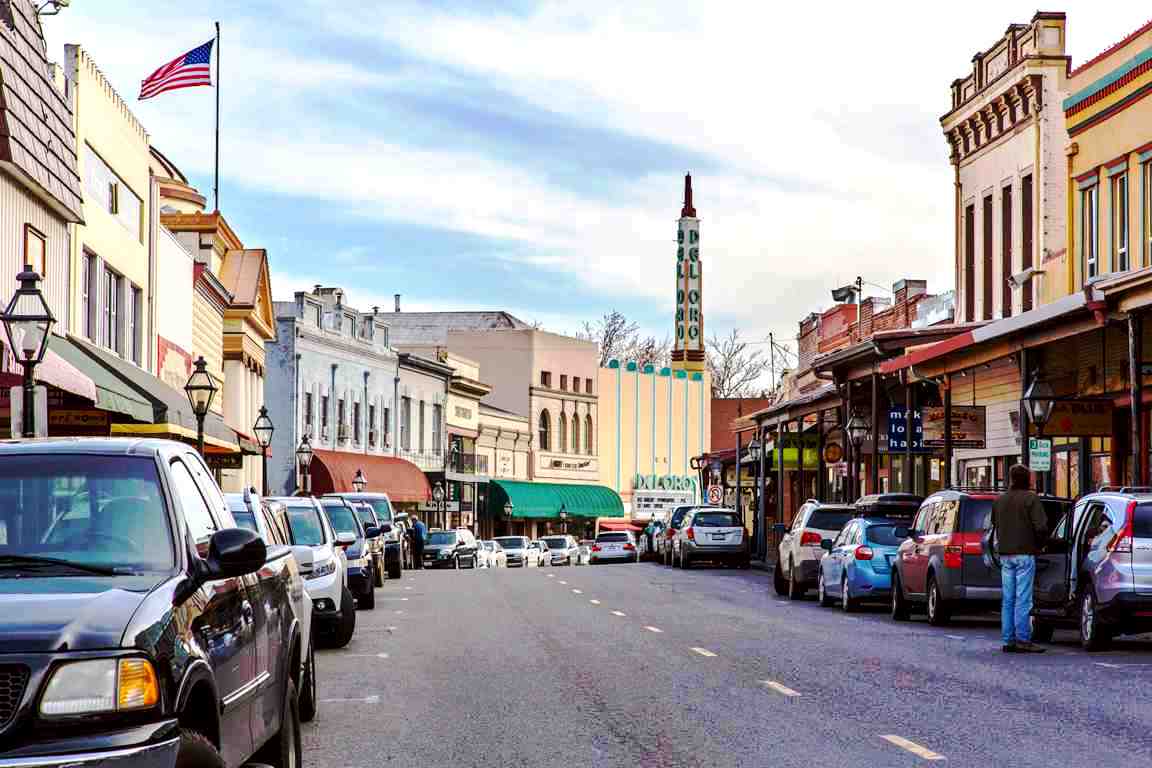
Litton had a pronounced effect everywhere he went. Starting in the bay area as one of the original founders of Silicon Valley, his influence only compounded over his adopted home in Grass Valley. He brought new commerce to the area, and as we will see shortly he not only brought his company but enticed other high tech endeavors to come and also call the area home.
Looking down Mill St. from Main
Aviation
As mentioned, his commute to work often was via helicopter. He owned an early Bell Ranger and because of his interest in helicopters he built over 100 helipads in the area. He developed a way to carry firefighters and their gear underneath his helicopter. He flew many missions himself.
Because of the remoteness of his English Mountain homestead, Litton learned to fly helicopters.
He also refurbished the airport, which had fallen into dis-use
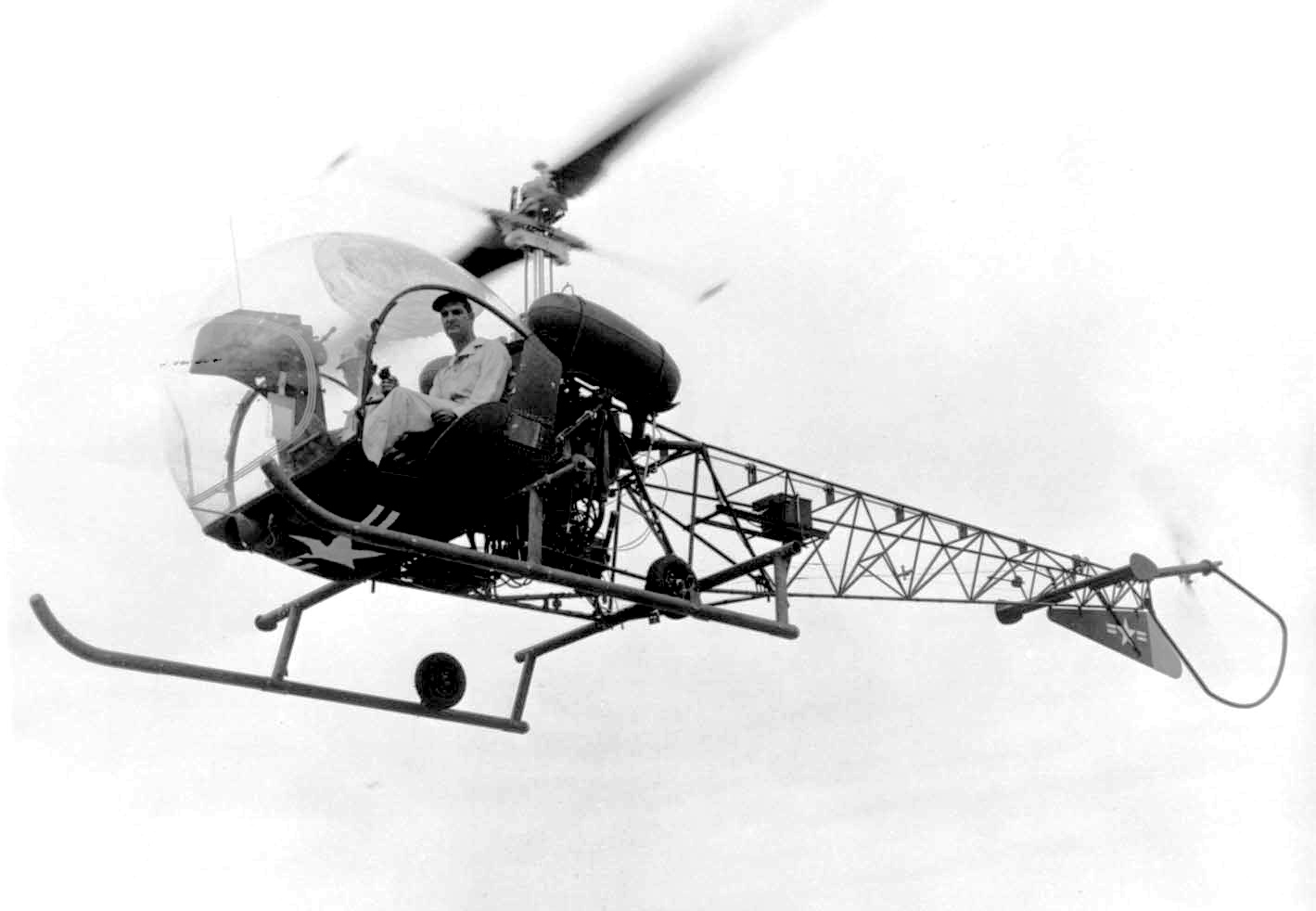
In 1955 Litton bought the airport that MacBoyle had built on his estate. Litton sunk $10,000 into repairing the runway that had not been used since the onset of World War II, as civilian flying within 150 miles of the coast was prohibited during the war, and the main user of the airport, MacBoyle's mines were shutdown also. Although in 1941 the Army Air Corps used the field temporarily as a squadron training site before abandoning it. The airport was reopened in 1956 and renamed the Loma Rica Airport after MacBoyle's ranch. Litton gifted the airport to Nevada County that same year. Today it is known as Nevada County Airport and is home to over 140 aircraft and sees over 30,000 flights a year. Cal Fire has several aircraft involved with battling the yearly forest fires in the state based there.
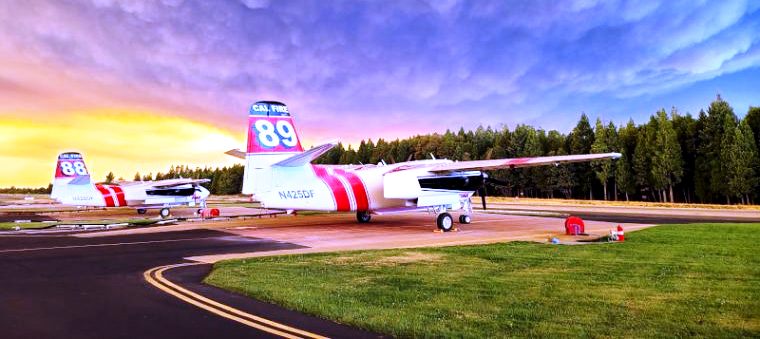
In 1958 Litton, Sr and a partner started Loma Rica business park at the airport. The original idea was like Cameron Park Estates, which came later, a community about 50 miles south that was built around an airport with residential streets wide enough to accommodate taxiing planes to and from homes with hangers attached to them. It was once claimed that more United Airlines pilots per capita lived there than anywhere else, as they could commute by air to work, landing at Hayward airport, nearby to SFO. United even ran a shuttle bus service from the airport, south of Oakland, across the bay to SFO.
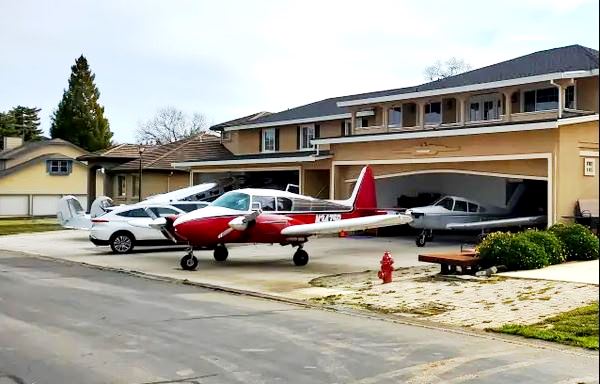
House in Cameron Park
Litton planned a community south of the airport with roads 80 feet wide to accommodate planes, and lots that were 4 acres in size. The lot was large enough so that you could have a hanger with your house. It did not go as planned. The four acre lots were soon being sub-divided by the owners and instead of housing it developed into an industrial park.
The building itself
Condo
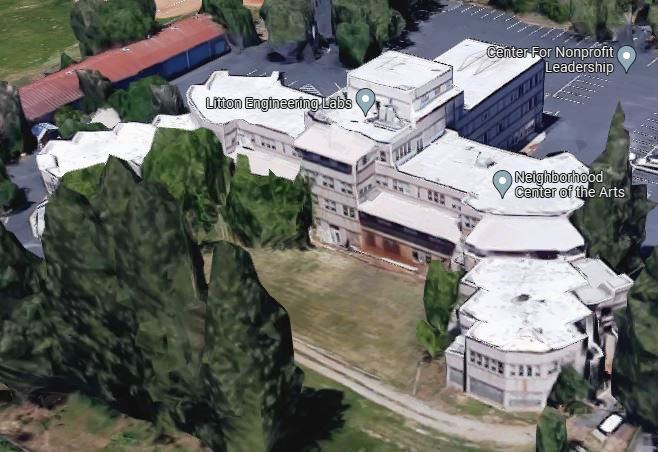
Because of the remoteness of English Mountain, the family eventually made the building their main residence. Besides a complete living quarters for the Litton's there were also apartments for visiting guests. The town did not have much in the way of hotels or motels in the early 50s
The Litton building is unique in several ways, besides its improbable birth and reuse. One of Litton's lawyers, Frank Hanley, thinks that the building might be the first modern instance of a condo. The building has three full stories, and smaller fourth and fifth stories. The first-floor houses Litton's manufacturing. The second are the Litton Engineering offices, with other tenants. The company does not actually own the building, a Litton controlled holding company called the English Mountain Ranch is the actual owner of the building. English Mountain Ranch is the name of the Litton's homestead up at Jackson Lake.
The third floor is interesting in that at one time it was the family's residence in Grass Valley. The building is T-shaped with north, east, and south wings. Besides the living quarters in the floors south wing, it also had additional apartments for out of town visitors in the north wing. In addition, Charles Sr personal office and his machine shop was there at one time. The East wing had 1800 ft square foot studio and a side room for sound recording equipment which senior had taken an interest in. Carpets in this room could be rolled up and the room used as a multipurpose room. The carpets and curtains there were to deaden the room. Senior loved to take people into the room and crank up the volume. Some guest could handle it, while some could not. In the corners he had large JB Lansing speakers. In the center there was a couch were guests would sit, and then he would proceed to batter them with the sound of a locomotive, which sounded like the real thing, barreling through the room.
It was also a great party room. Larry tells the story of hosting a Halloween party there when he was in high school. It was memorable enough that a teacher at Nevada Union High School told Larry's daughter about it.
Charlie Junior graduated from college in 1970, got married and lived somewhere else in town for a while. Charlie Jr and his wife were expected to live in the building, at least while senior was around. After senior's death their mother moved to Incline Village, Nevada and not back to California for estate purposes.
While Charlie Jr no longer has any living quarters in the building, Larry and their sister still have their old bedrooms in the building. Most of the third floor living quarters have been converted and are rented out as offices, as has parts of the second floor. In 2019 that included a land developer, a machine shop, a glass manufacturer that specializes in wine glasses and accessories, along with Christmas ornaments. There is also a few government and community groups in the building.
Business Incubator
One of the biggest success stories, not only in the area, but in the television industry is AJA Video. It started in the Litton Building and literally grew up right next store
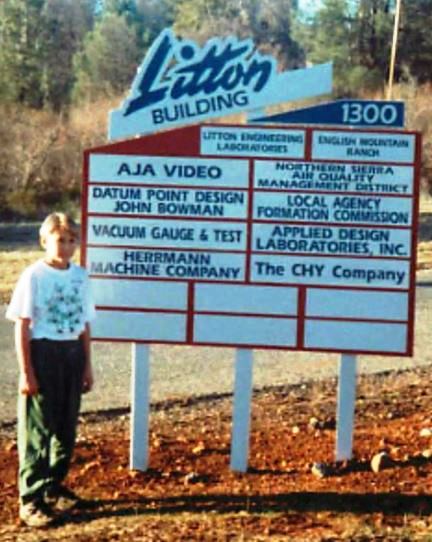
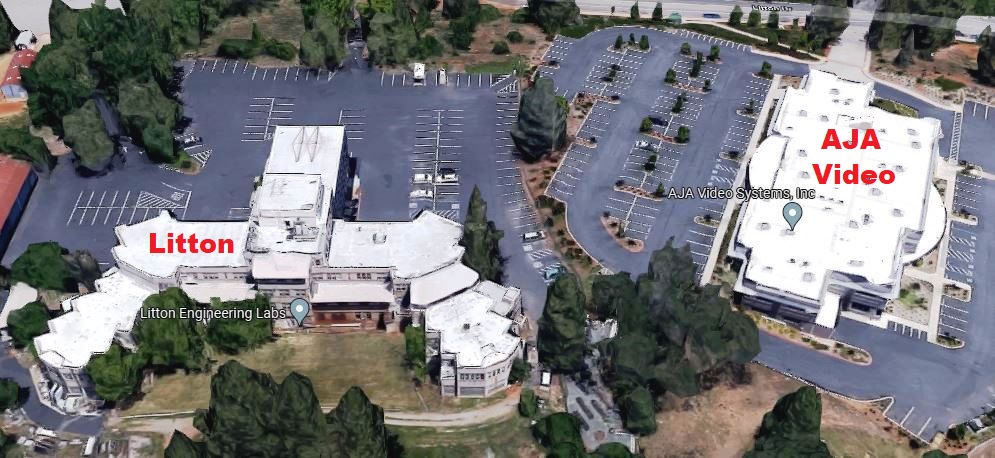
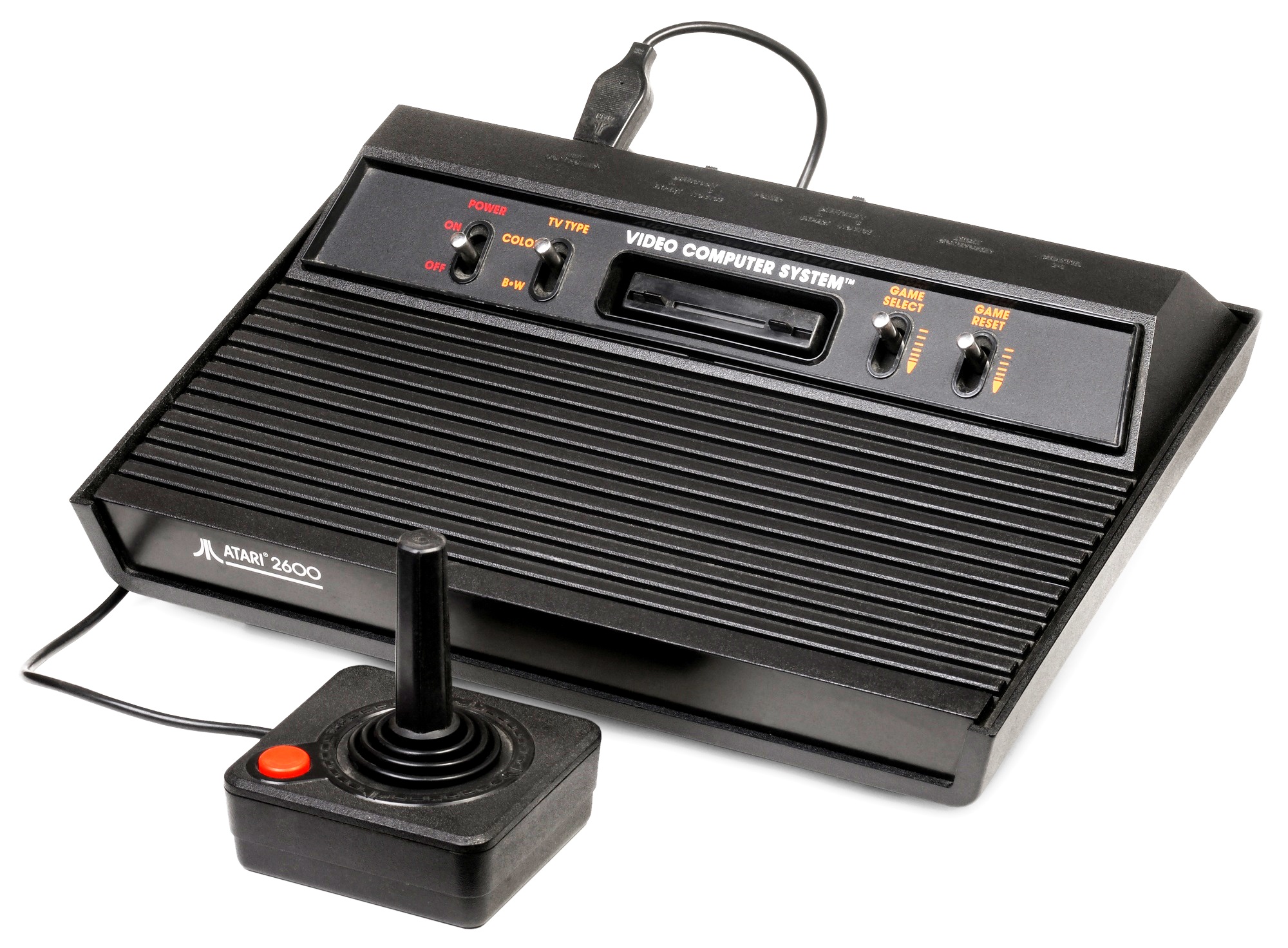
Besides AJA (which we will look at in chapter 12) other things that came out of the building; the Atari 2600 gaming console (again chapter 12), the original video or "picture" phone, U.S. Robotics early modem, Grandma A.G Bear talking bear by Axlon in 1986, and the Hott Lixx gaitar, which won a "toy of the year" award in 1989.
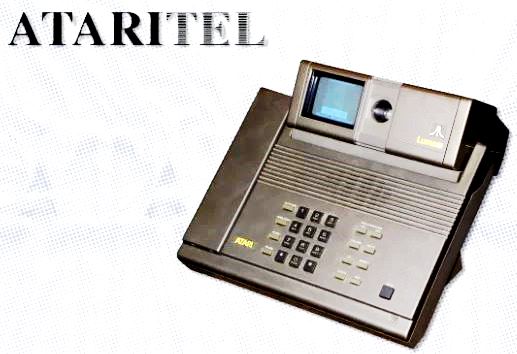
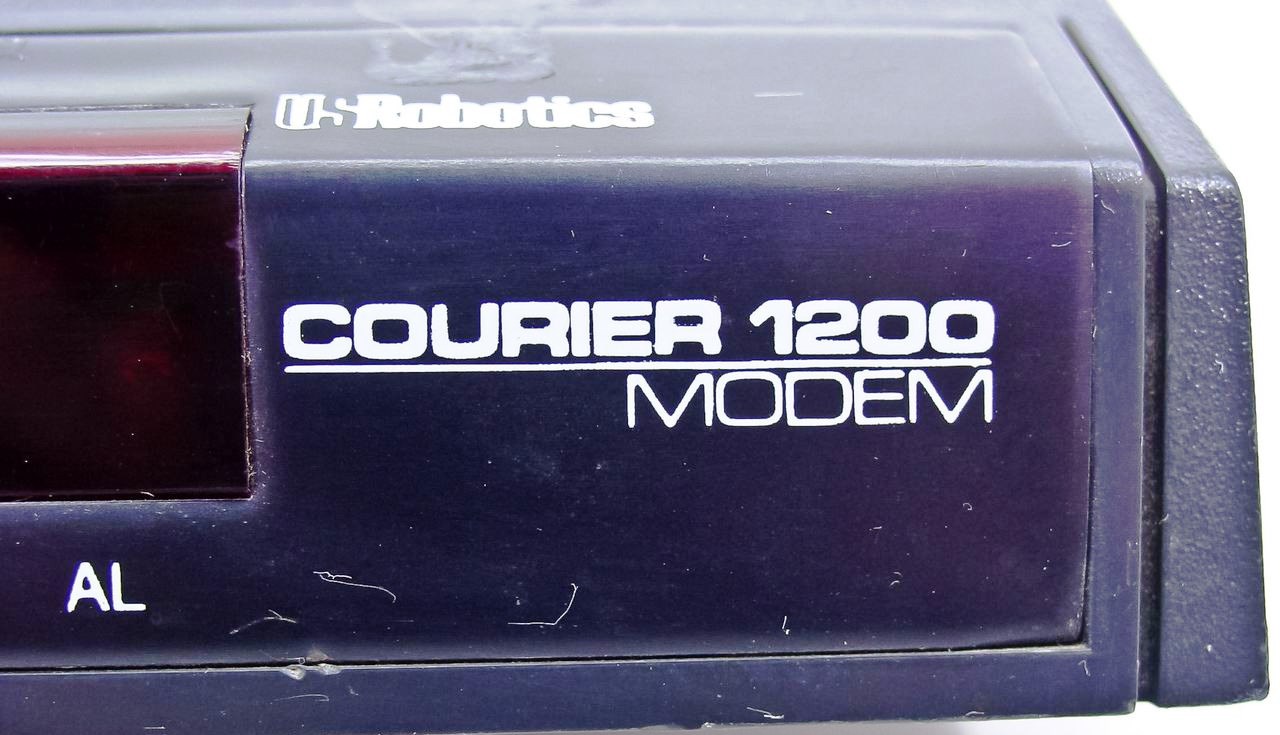
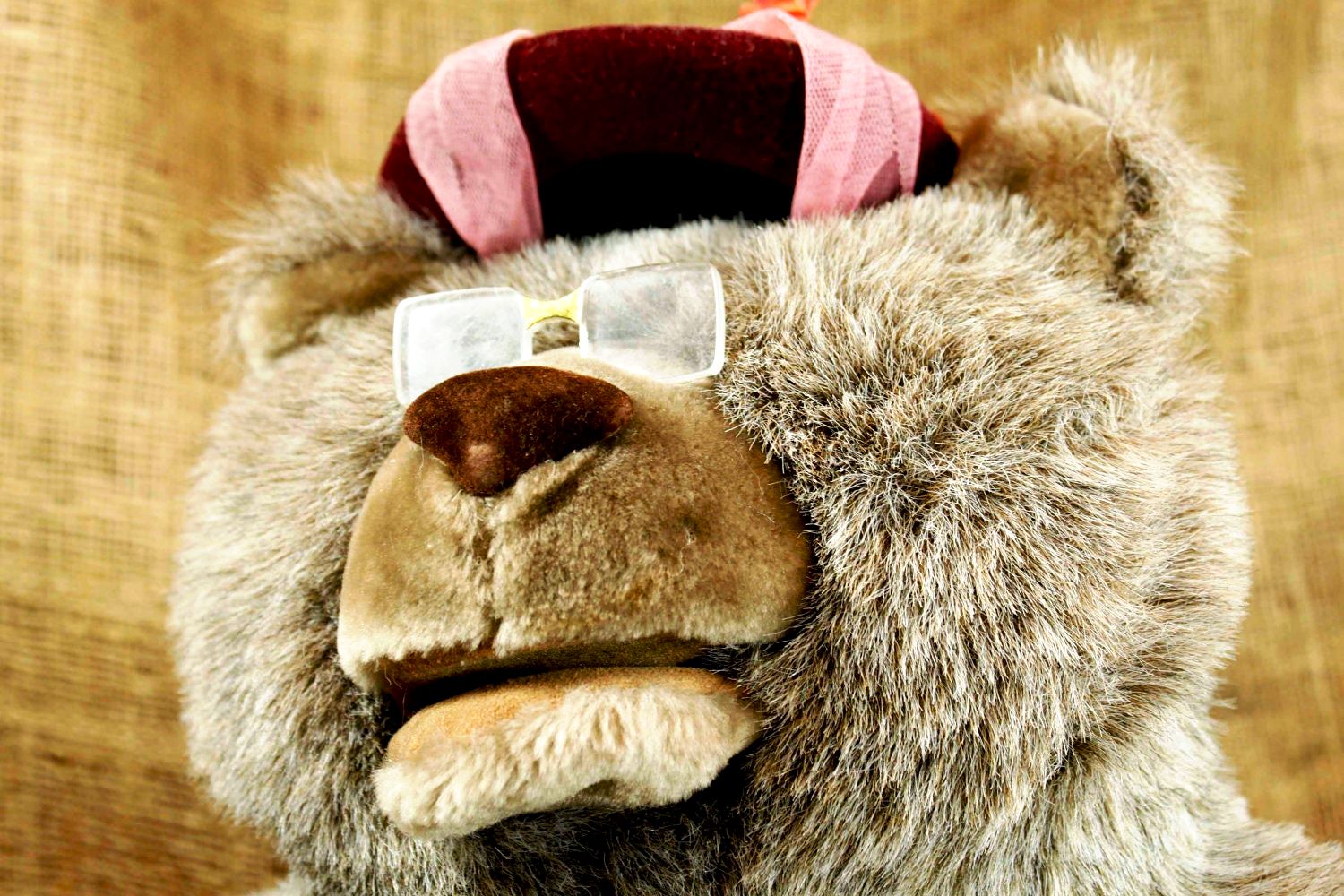
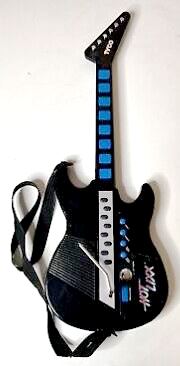
The stage is now completely set and lit. It is very likely, most probable that the incubator would have never happened, at least on the scale it did, without the entrance of the final key player, who we will now introduce.






















